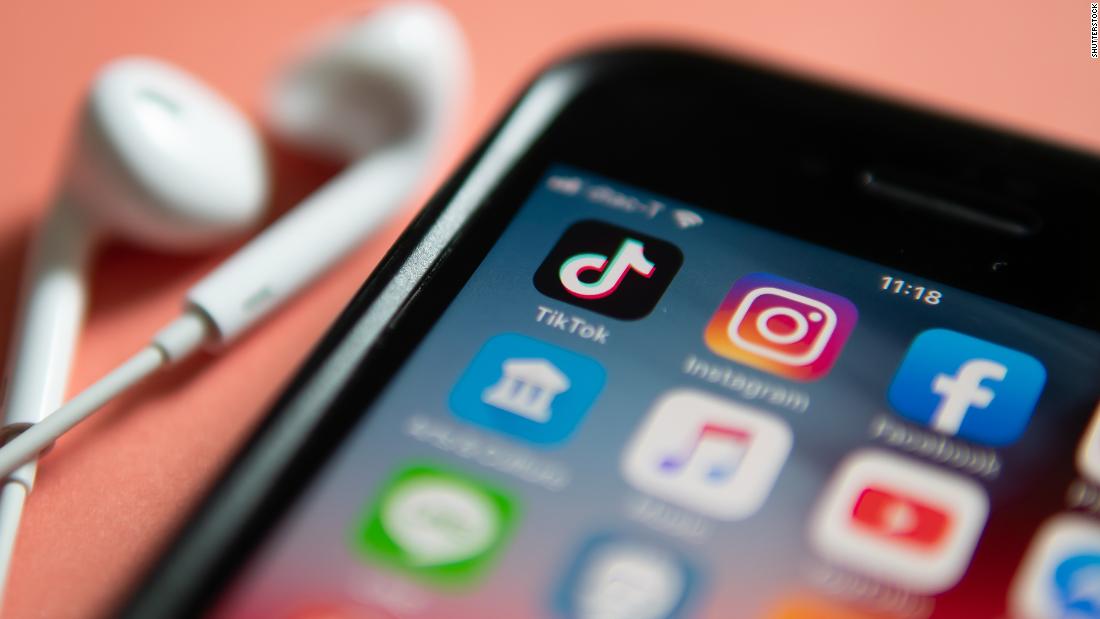But Instagram and its parent company Facebook (FB) are having a harder time doing the same with TikTok.
Instagram launched Reels, a short-form video product, in the United States on August 5, days after former President Donald Trump announced plans to ban Chinese-owned TikTok in the country, causing panicked users to fight to find alternatives.
Six months later, it is not taking off the way the company expected. TikTok survived the Trump administration and remains popular, with about 100 million users in the United States, a significant impact on American pop culture and a loyal mix of influencers who seem to be going nowhere. Unlike Stories at this point in its history, Instagram has not released any metrics about Reels so far.
“TikTok is light years ahead of the Reels,” said Evan Asano, CEO of the influential marketing agency Mediakix, referring to TikTok’s powerful content recommendation system and the fact that the app is much more focused than that of Instagram, which has a growing list of competing video offers.
Adam Mosseri, head of Instagram, recently admitted that Reels had work to do and suggested Instagram’s need to simplify or consolidate its various video product offerings.
“I’m still not happy about that,” Mosseri said in an interview with Verge last month about Reels. “We are growing in terms of how much people are sharing and how much they are consuming, but we still have a long way to go.”
Facebook is under scrutiny by regulators and critics for its aggressive approach to acquiring or cloning rivals to maintain its dominance in the social media market. But Instagram’s initial struggle to face TikTok is a reminder that several Facebook impersonator products have failed or fallen short. Building a clone is easy; creating a vibrant community is not, even for the social media giant.
Instagram has made some adjustments to the product since launch, including giving Reels its own dedicated tab on the Instagram home screen and adding more editing tools. But Instagram Reels largely remains a home for TikToks biggest hits, with many people posting popular TikTok videos with the platform’s watermark for Reels. It is common to browse the Moments videos and see one TikTok video after another.
“Everyone always says to me, ‘I’m going to shoot TikToks,’ but they never say, ‘We’re going to shoot Reels,'” said Parker Pannell, a 17-year-old with 2.4 million TikTok followers who thinks of posting to Reels as an afterthought. . “TikTok sets trends, builds new creators, people build their most loyal followers [there]. People are so spoiled in this TikTok environment, they are not ready to transition to another platform like Reels. ”
It is not the first time that Instagram strives to gain strength with the video. In 2018, it launched a new long-form video feature and a standalone app called IGTV, in an attempt to compete better with YouTube, but had trouble taking off. Instagram ended up removing the IGTV button from the top of people’s feeds because almost nobody clicked on it. IGTV videos are now part of the main feed.
With Reels, Instagram tried to replicate much of what makes TikTok popular, including editing effects and the ability to add music or background sound. But what is more difficult to emulate is TikTok’s powerful “For You Page” and its algorithm, which offers videos tailored to the interests of each user.
“I would never rule out Instagram in any way. They are usually focused on how to stay on top of the competition,” said Karyn Spencer, CMO at the Whalar influence agency and former chief creator of the short video platform Vine. “At the same time, I don’t think any of us experience the same type of algorithm on Instagram that we currently experience on TikTok.”
The slower start with Reels can also highlight a broader problem with Instagram. “Doing the simple thing first” was an old mantra for the company, but some social media experts say the app gets more and more complicated and confusing as more and more features are released. And it’s hard not to feel the influence of Facebook, especially since the founders of Instagram left in 2018.
TikTok’s simplicity gives it a “big advantage,” said Asano of Mediakix, adding that Instagram now has features for shopping, Stories, Reels and other video formats, which he feels end up competing with each other.
“Soon you end up with a monster that no one can understand,” he said.
.Source
Related
